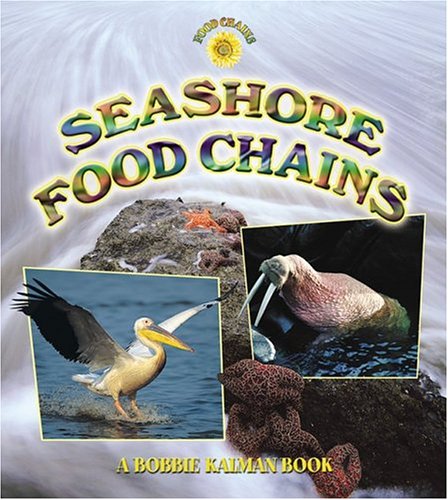-
Herbivores
Jill Foran
Library Binding (Av2 by Weigl, July 1, 2011)Examines those mammals which are herbivores, including birds, insects, mammals, and reptiles. Q
Q
-
Desert Food Chains
Bobbie Macaulay Kalman
Library Binding (Crabtree Publishing Company, Oct. 1, 2004)Plants and animals in the Sonoran Desert food chains have had to adapt to the hot, dry climate of this habitat. Conserving water is a large part of these food-chain adaptations. This book helps children, aged 5-9 years, learn about the Saguaro cacti and the many herbivores and carnivores that are part of the food chains of this desert. P
P
-
Food Chains and You
Bobbie Kalman
Hardcover (Crabtree Publishing Company, Oct. 1, 2004)Through photographs and illustrations, this book conveys how the transfer of energy takes place from the sun to various plants and animals, including people. Showing children how they, too, are part of food chains, this book helps them learn about: herbivores, carnivores, omnivores, and decomposers; energy pyramids; and, other topics. T
T
-
Prairie Food Chains
Kelley Macaulay, Bobbie Kalman
Library Binding (Crabtree Pub Co, April 1, 2005)Describes the interaction of predators, prey, plants, and non-living elements that make up the food chain in prairies, and touches on what happens to the food chain when the balance of nature is upset. T
T
-
Australian Outback Food Chains
Bobbie Kalman, Hadley Dyer
Library Binding (Crabtree Publishing Company, Nov. 1, 2006)This book is suitable for ages 5-9. This book examines the Outback habitat and the adaptations that its resident wildlife have made over time to live in this harsh environment, and outlines the variety of plants and animals found in Australian Outback Food Chains. N
N
-
What Eats What in a Forest Food Chain
Lisa J. Amstutz, Zack McLaughlin
Library Binding (Picture Window Books, Aug. 1, 2012)A temperate deciduous forest teems with life. From a tall oak tree to a turkey vulture, the living things in this books are linked together in a food chain. Each one of them needs the others in order to live. Find out what eats what in a forest! M
M
-
Food Chains in a Meadow Habitat
Isaac Nadeau, Dwight Kuhn
Library Binding (Powerkids Pr, Aug. 1, 2002)Describes the meadow environment, and the levels of the food chain found there and how it works. R
R
-
Seashore Food Chains
John Kalman Crossingham
Hardcover (Crabtree Publishing Company, March 1, 2005)From gulls and turtles to kelp and fish, the range of life found by the seashore fascinates children. This book talks about: the nature of food chains and webs; how microscopic aquatic organisms kick-start food chains; migratory animals that come in and out of seashore food chains; and, the dangers to seashore life such as pollution. Q
Q
-
Tundra Food Chains
Kelley Kalman Macaulay
Library Binding (Crabtree Publishing Company, March 1, 2005)The tundra is one of the most extreme habitats on Earth and yet hundreds of species of plants and animals thrive there. Containing photographs and text, this book aims to teach children, aged 5-9 years, about: how plants and animals' bodies have adapted to survive; the ways animals find food in this habitat; and, why some tundra animals migrate. R
R
-
What Eats What in a Rain Forest Food Chain
Lisa J. Amstutz, Anne Wertheim, Kelly Swing PhD
Library Binding (Picture Window Books, Aug. 1, 2012)A tropical rain forest teems with life. From a cacao tree to a king vulture, the living things in this book are linked together in a food chain. Each one of them needs the others in order to live. Find out what eats what in a rain forest! R
R

